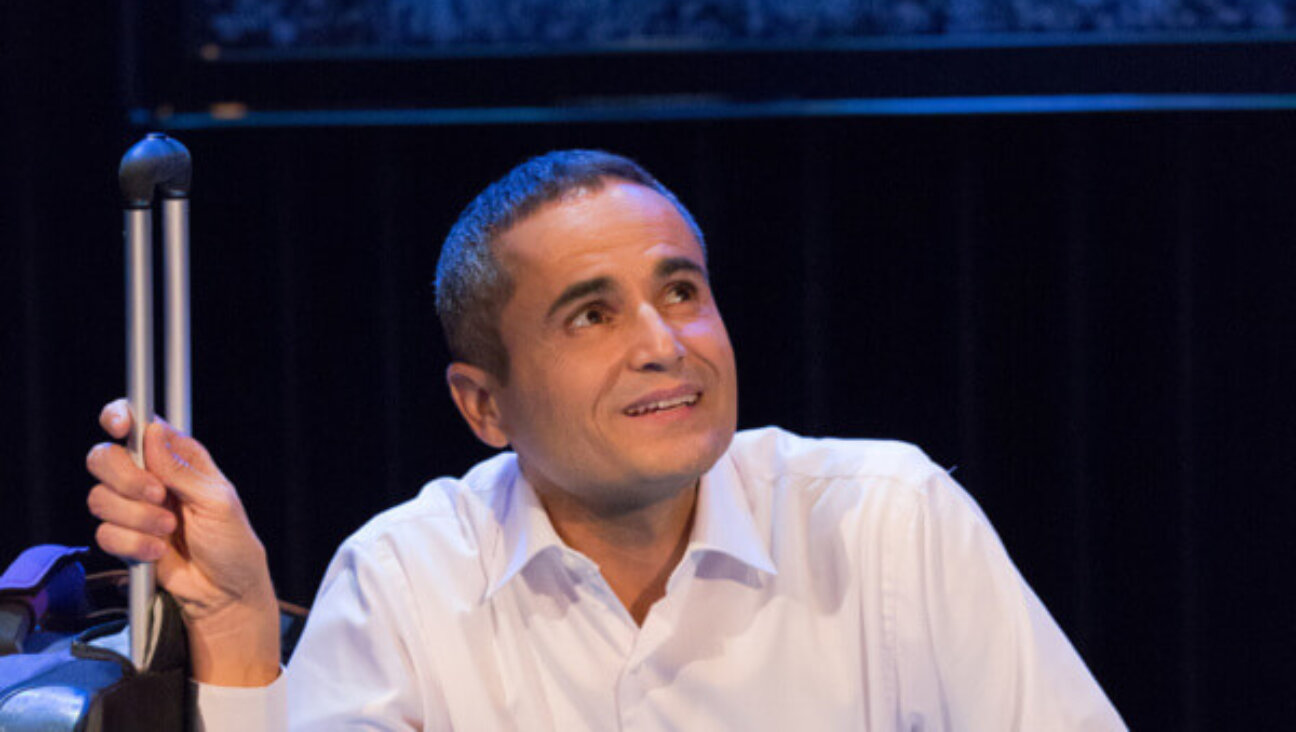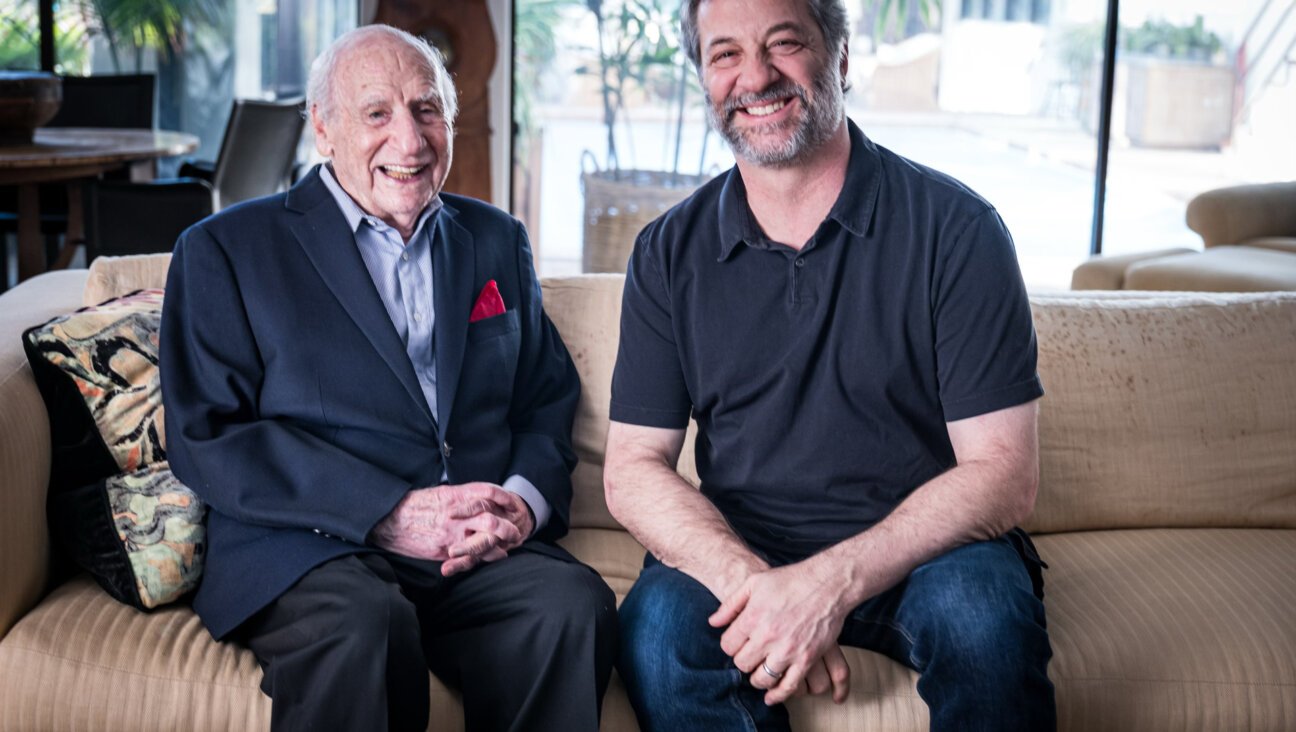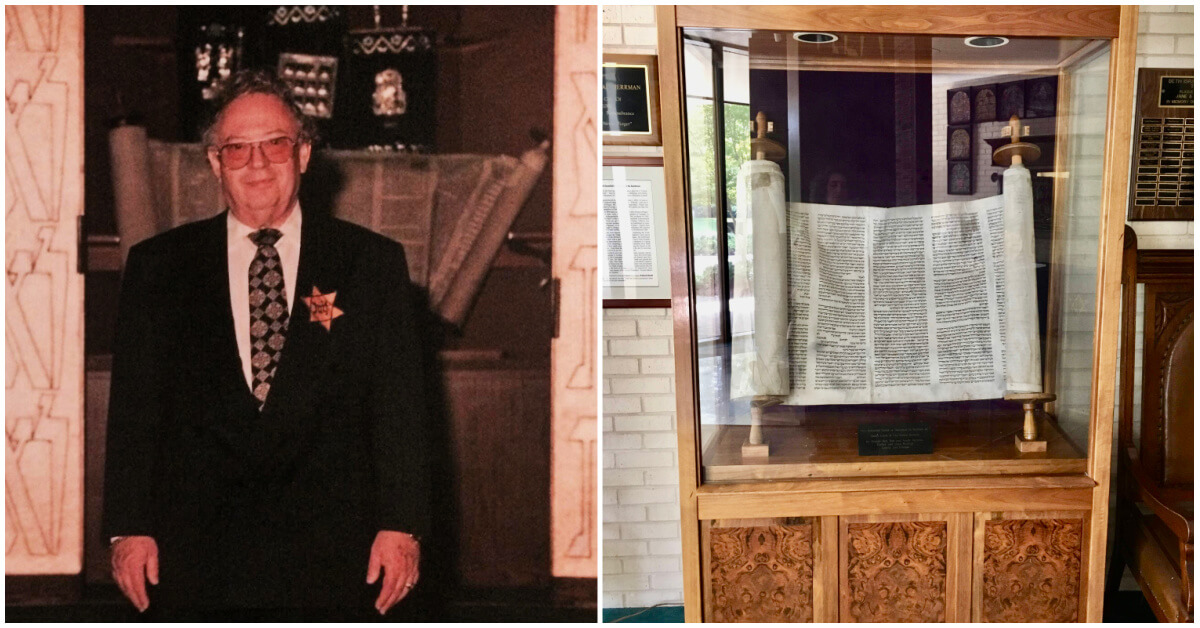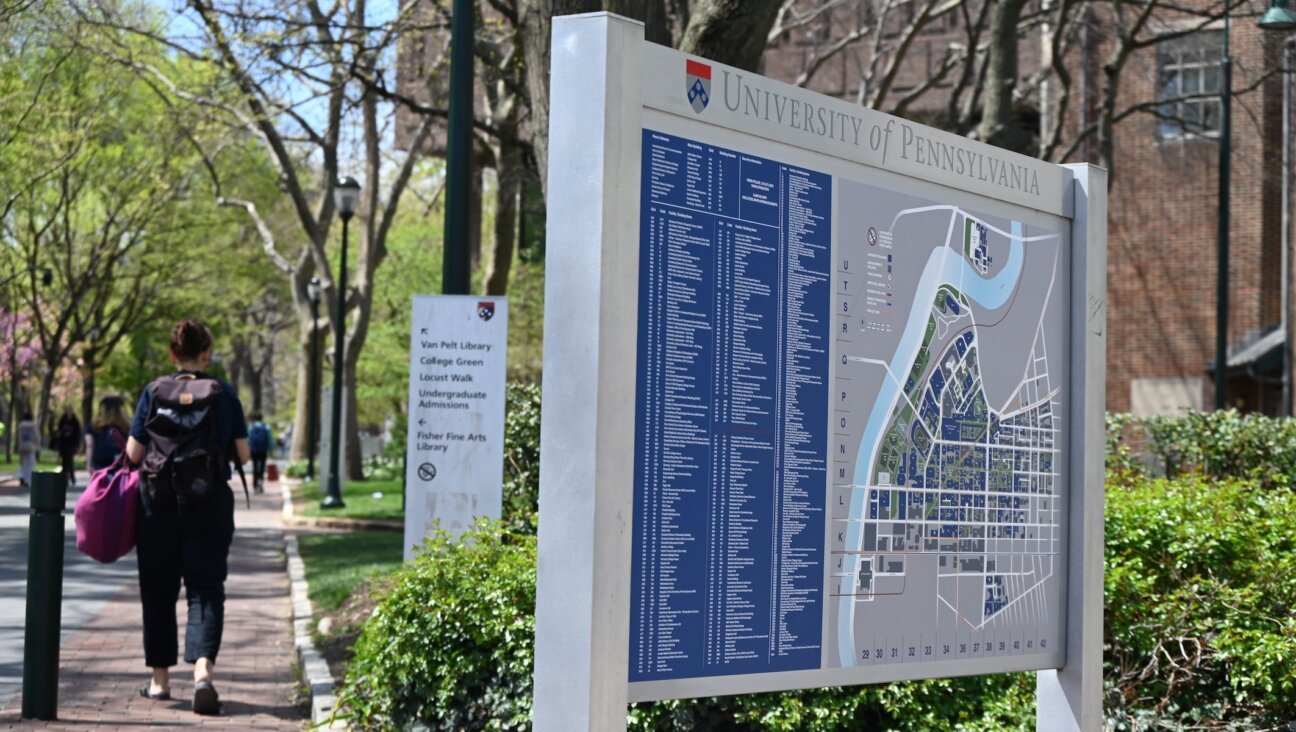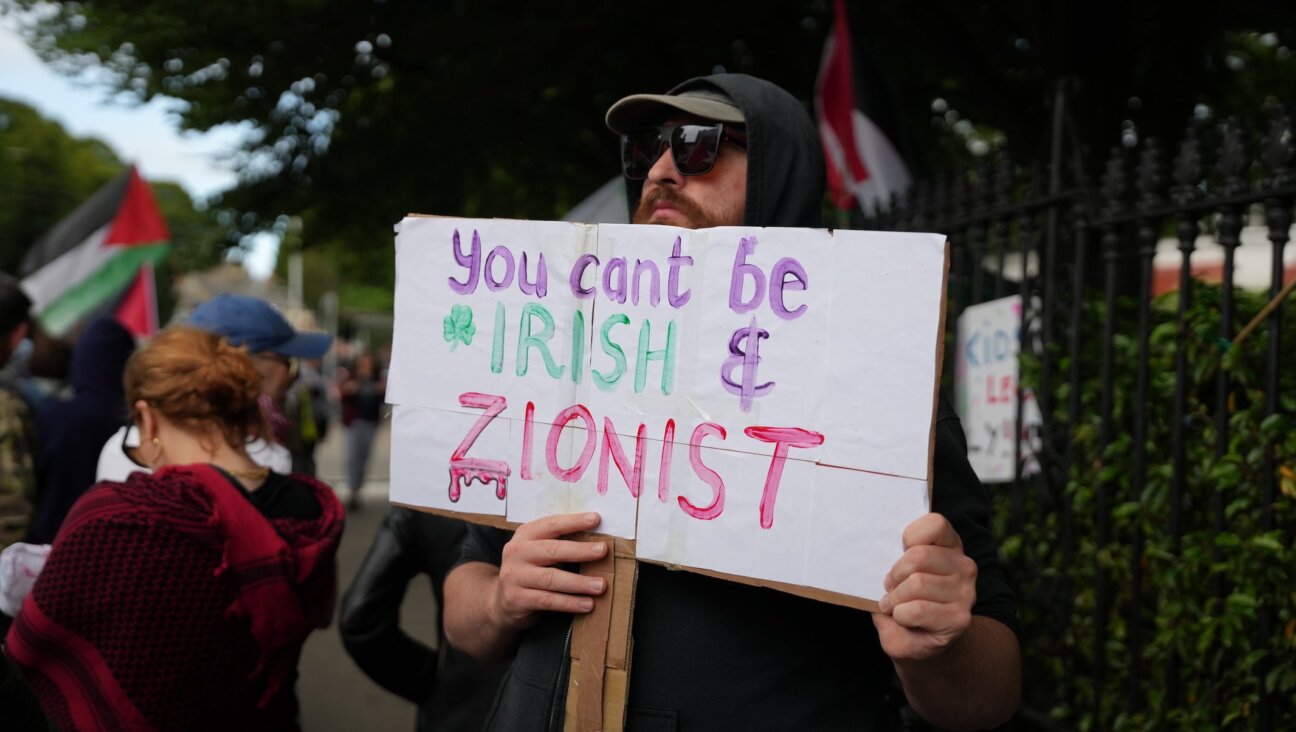This Food Pantry Uses Technology And Kindness To Help Feed Hungry Jews (And Others)

Blueberries Image by IStock
This essay is part of an ongoing series about Jewish poverty. Previous entries in the series can be found here and here.
It was a bright Thursday morning in late May, and suddenly there was a blueberry crisis.
A few staff members of the digital food pantry at the Commonpoint Queens location in Forest Hills (formerly known as the Central Queens Y) hovered around the computer, trying to figure out why the online inventory said that the 3-pound bags of frozen blueberries were out of stock, when in fact there were piles of these packages in a large freezer in that very room.
Blueberries are a “hot item,” Mindy Nisanov, the pantry’s program coordinator, told me — clients like to cook and bake with them, and while frozen food isn’t as nutritious as fresh, it’s a huge improvement over canned produce that often is overly salted and still generally tasteless.
The pantry allows poor and near-poor individuals to make their own choices about the food they receive, using a point system based on family size. These clients choose from an online inventory that reflects what’s in stock at that very moment, making this pantry popular, impactful and efficient. So when there is a glitch in this carefully calibrated system, even a small one, it must be addressed ASAP.
And in short order, it was. “Blueberry problem fixed!” came the cry.
In the fight against hunger and poverty in the Jewish community, this attention to detail is emblematic of an innovative approach that melds technology with a focus on the dignity of those in need. In the absence of a genuine safety net for all Americans, and as some Jewish leaders are finally recognizing that poverty in the community is persistent and serious, the story of this digital food pantry is both inspiring and instructive.
Just to remind you: According to the UJA Federation, there are 1.5 million Jews living in New York, and one-third of them live near or below the poverty line. While American Jewish poverty is most pronounced in this city, it is not confined here. Nationwide, 16 to 20% of American Jews live at or below 150% of the federal poverty line, and 7% of Jewish households earn less than $15,000 a year.
For a Jewish population as prosperous and as powerful as this one, this should be unacceptable.
“People are often shocked when they hear this. They believe that ‘Jewish’ and ‘poverty’ is an oxymoron,” Danielle Ellman said in an interview. “People don’t fully understand the impact of the problem.”
Ellman is the dynamic chief executive officer of Commonpoint Queens, the new name of the Central Y after it merged with the Samuel Field Y. The borough is home to 25% of near-poor and 12% of poor Jewish households in the New York area, in pockets of poverty that exist, often hidden, next to the outward signs of middle class success. Poor Jews aren’t wandering the tree-lined streets of Forest Hills begging for a buck — this isn’t some stereotypical shtetl. But that makes reaching the needy more of a challenge. Creativity and collaboration are required.
In the case of the digital food pantry, the spark was — literally — a fire.
Most of us picture food pantries as non-descript church basements lined with canned goods collected by well-meaning individuals or discarded by over-supplied warehouses. Or we see volunteers handing out sandwiches and water bottles to the homeless, as happens in my neighborhood.
Or we think of the Christian clergy who minister to the poor by providing Thanksgiving turkey and Christmas dinner on plates laden with gravy and mass-produced mashed potatoes. One Sunday a month, I used to load my kids and their friends in our minivan and schlep them to a church in Philadelphia to volunteer alongside those whose faith compelled kindness, even to those who life had tossed on the street.

The Queens version of Michelle Obama’s White House Garden? Everything that is produced in the garden is packaged and distributed to the steady stream of clients, Jews and non-Jews, who show up at the food pantry every day. Image by Jane Eisner
But all these interventions, as godly as they are, are predicated on the notion that the poor will take what they are given, that they have no choice in the matter, no control.
Food distribution at the Queens Y was largely like that, until a few years ago, when Ellman said that the efforts shifted to focus more on “client choice.” Instead of receiving a bag or carton of items, the needy would be able to choose what they wanted from a food pantry.
That, however, led to another problem: Those with the time and energy would line up early to snatch the best offerings. There could be a mismatch between supply and demand.
Then the two-story house on 67th Road, adjacent to the sprawling Y, caught on fire. It may have been related to a spate of mysterious fires in large homes under construction and owned by Bukharan Jews in central Queens in late 2015; arson was suspected. When the pantry was forced to relocate to a nearby Jewish center, Ellman said they used the opportunity to “rethink a more dignified approach.”
Led by the New York federation and in collaboration with the Metropolitan Council on Jewish Poverty — the largest distributor of kosher food in the city — the Y learned about new digital food pantries in New York (St. John’s Bread and Life in Brooklyn) and Philadelphia (the Mitzvah Food Program run by the Jewish federation.)
Ellman said that they also wanted to figure out a way to take in fresh produce and offer more healthy food, but that requires delicate coordination, since the produce is perishable and must be distributed quickly. The solution came in the form of cutting edge technology, and old-fashioned dirt, seeds and sunshine.
Once renovations on the pantry house were finished — complete with a white picket fence — the operation there re-opened in September 2017 with an entirely new format. On the day I visited, Nisanov, the program coordinator, tapped on a computer in the entryway to demonstrate how the system works.
A client registers and is awarded monthly points based on the number of people in his or her household. The online profile can be set in any of eight languages: English, Hebrew, Russian, Farsi, Chinese, Korean, Spanish, Georgian — which gives you some idea of the diversity of people served. Similar to how users access other online groceries, the client chooses among fruits and vegetables, grains, proteins, and sometimes hygiene products, which are then packaged for pick up.
But unlike ordinary groceries, healthy food is incentivized and personalized. A box of regular pasta is worth 20 points; whole wheat pasta can be had for 10 points. Allergies and health conditions are noted on the profile. So if, for example, a child has a peanut allergy and the mother selects peanut butter, she will be prompted (but not required) to make another choice.
“When everything feels out of control, you can come to a place whether people greet you with a smile and feel a sense of control,” Ellman explained.
That’s certainly what drew Sivya Fischer to the pantry that day to register as a new client, hobbling through the entryway to sit at a table where a volunteer led her through the process. “I live a block away, but it’s hard for me to shop because I have back problems,” she said. “I heard they give out good quality stuff.”
An immigrant from Israel, Fischer lives with her son on Social Security and a pension. Her story is common; older adults on a fixed income are a mainstay of the food pantry. The service is designed to offer the equivalent of three meals a day for three days a month, as a supplement — not a replacement — for ongoing government assistance.
The other set of clients are individuals and families who are unemployed or underemployed, with episodic needs, making do one month and hungry the next. Like the woman who came for the first time before Passover in April and returned that day in May. She gave me her name and then begged me not to publish it. Single, on disability, with a big family, “I feel ashamed,” she acknowledged with a heavy Russian accent.
She spoke amid a gentle hum of activity, as older volunteers and younger interns packed bags, boxes, carts and rolling suitcases with whatever the client ordered, choosing from corn flakes, apple juice, canned chickpeas, matzo ball soup mix and anything else available from the Met Council warehouse and occasional donations. The number of clients has more than tripled in less than two years — 2,780 people were served in April, Ellman said — but because the system is streamlined and efficient, the small house can handle the flow. More and more are placing their orders online, for quick pick up during business hours.
And then there is the garden.
Until three years ago, Jonathan Shevin was the early childhood program director at the Central Queens Y. He watched as the yard in front of the food pantry next door became a staging area for renovations after the fire. Why not turn the space into something more productive?
Fast forward to that sunny day when I visited in May, and Shevin is wearing a baseball cap and patting dirt in a plant box. Following his passion, he received training at the New York Botanical Gardens to become a horticulture therapist, and now oversees a veritable mini-farm in urban Queens.
Last year he grew 160 pounds of fresh herbs and produce; he’s aiming to break 200 pounds this year. There are carrots, cucumbers, tomatoes, beans of all varieties, Swiss chard, gorgeous looking lettuce, piles of potatoes. He repurposed an old shipping pallet into an herb garden with garlic, cilantro, fennel, mustard seed.

The Gardener: Last year, Jonathan Shevin grew 160 pounds of fresh herbs and produce; he’s aiming to break 200 pounds this year. Image by Jane Eisner
He snapped a piece of oregano and held it up for me to smell. “You’ll want to have pizza for lunch!” he said happily.
Senior citizens from the Y work in the butterfly garden filled with native plants to keep pollinators in the neighborhood — columbine, echinacea, rattlesnake master. Toddlers from the childcare center decorated the herb planters. Rainwater is collected in a barrel for irrigation.
It’s the Queens version of Michelle Obama’s White House garden. And everything that is produced is packaged and distributed to the steady stream of clients, Jews and non-Jews, who show up at the food pantry every day.
The economy may be booming for the 1%, but the poor and near-poor are living among us, while President Trump’s proposed 2020 budget cuts Medicaid, Medicare, food stamps, disability insurance and other safety net programs. In the absence of broader structural reforms, it is at least consoling to see federations experiment and expand their efforts to address Jewish poverty. To serve people like Zoya Yakubova, 71, short and energetic, who lives a 30-minute walk from the Queens food pantry, and since she retired, is both a volunteer and a client, supplementing her government assistance with chicken, milk, vegetables. “It’s very necessary food, I would say healthy food,” she told me.
But more than that, it’s the approach to feeding the hungry that draws her. “It’s a very good atmosphere. It’s not humiliation, not discrimination,” she said, her English awkward but her meaning clear. “I see they are really helping. The atmosphere makes a difference.”
Contact Jane Eisner at [email protected]



